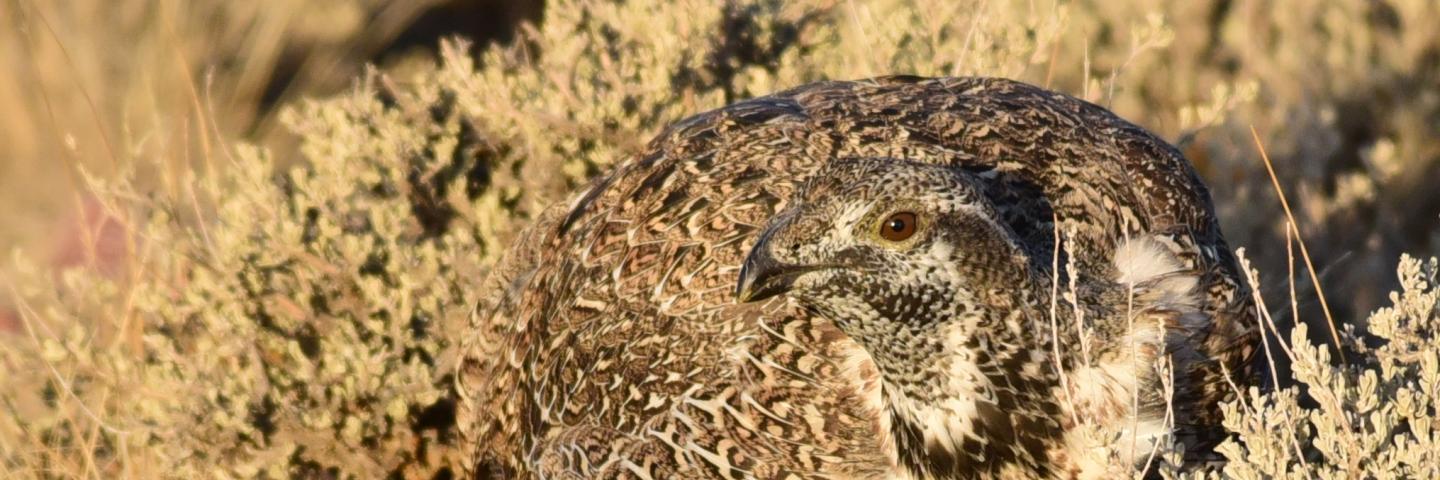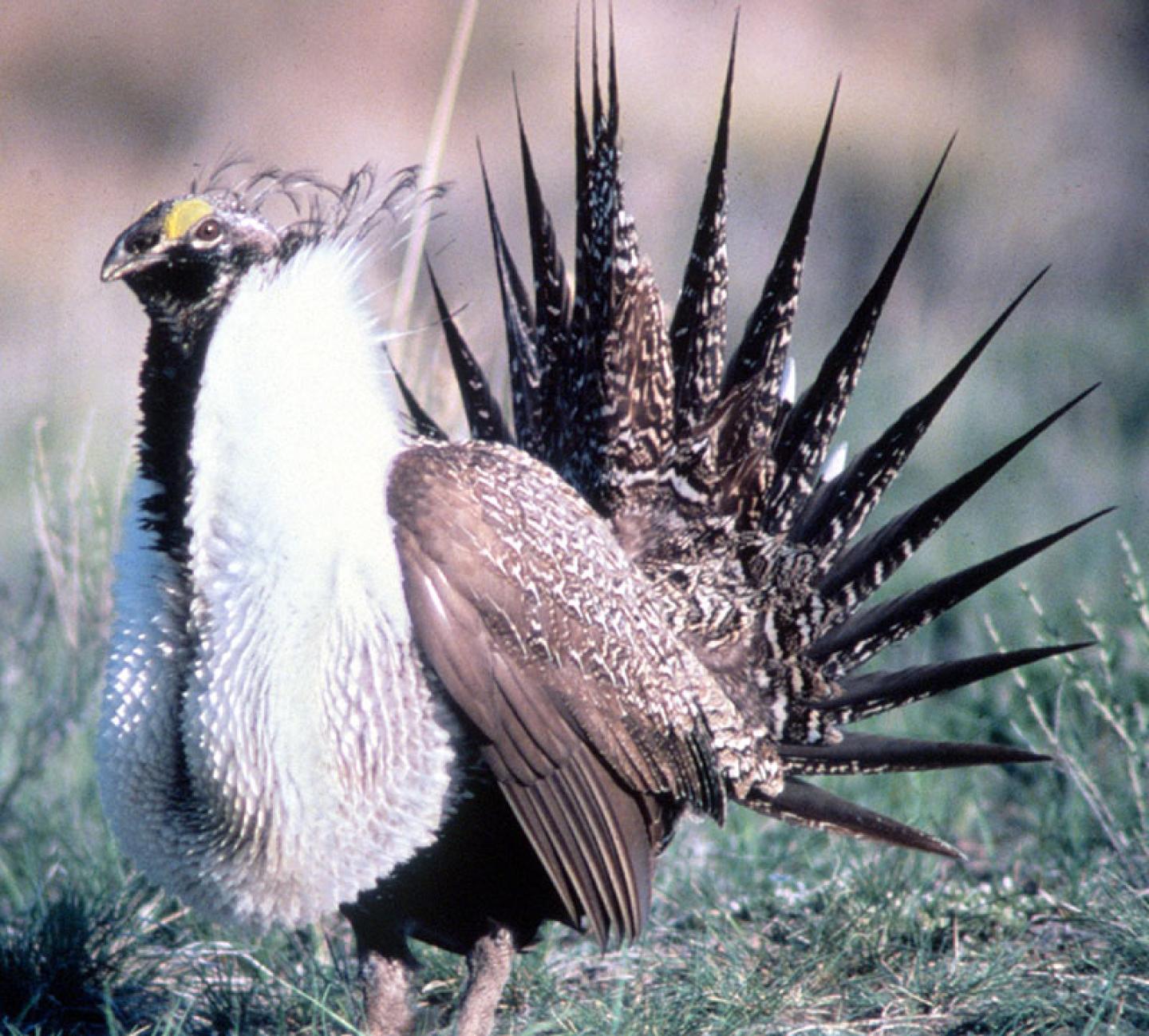
Through SGI, NRCS works with landowners in 11 Western states to improve habitat for sage grouse and improve sustainability and productivity of native rangelands.
FY-24 Ranking Information
-
FY-24 Greater Sage Grouse Ranking Information (157.03 KB)
-
FY-24 Gunnison Sage Grouse Ranking Information (149.34 KB)
Colorado - EQIP SGI
The NRCS accepts applications on an ongoing basis. Colorado landowners and land mangers within Moffat, Delta, Eagle, Garfield, Mesa, Gunnison, Grand, Summit, Rio Blanco, Montrose, Routt, Jackson, Saguache, San Miguel, and Dolores counties are encouraged to visit their local USDA Service Center for more information.
NRCS uses Farm Bill conservation programs, such as the Environmental Quality Incentives Program (EQIP) and Agricultural Conservation Easement Program (ACEP), to provide technical and financial assistance to help ranchers accelerate installation of conservation practices on the ground. Using a voluntary and incentive based approach, NRCS focuses its resources in priority conservation areas and areas with higher bird populations in California, Colorado, Idaho, Montana, Nevada, North Dakota, Oregon, South Dakota, Utah, Washington and Wyoming.
How SGI Works
Conservation practices are designed to be win-win solutions addressing threats facing both sage-grouse and rangelands. This type of conservation work includes:
- teaming up with ranchers to customize a grazing plan that will improve nesting, rearing, and wintering habitats for sage grouse,
- removing encroaching conifers that have invaded sagebrush-steppe,
- installing conservation easement to keep working lands working as intact range,
- enhancing and protecting wet meadows, springs, seeps and riparian areas associated to the sagebrush-steppe, and
- removing, relocating or visually marking fences to reduce sage grouse collisions.
While SGI focuses its work on private lands, home to 40 percent of the birds, NRCS also participates in projects on federal lands where ranchers have leases for grazing. This unparalleled partnership aims for seamless conservation across boundaries.

Greater Sage-grouse are a significant indicator of the health of the sagebrush ecosystem. Over 250 species depend on. this habitat including mule deer, pronghorn, elk and a wide variety of migrant and resident bird species
Ready to get started?
Contact your local service center to start your application.
How to Get Assistance
Do you farm or ranch and want to make improvements to the land that you own or lease?
Natural Resources Conservation Service offers technical and financial assistance to help farmers, ranchers and forest landowners.

To get started with NRCS, we recommend you stop by your local NRCS field office. We’ll discuss your vision for your land.
NRCS provides landowners with free technical assistance, or advice, for their land. Common technical assistance includes: resource assessment, practice design and resource monitoring. Your conservation planner will help you determine if financial assistance is right for you.
We’ll walk you through the application process. To get started on applying for financial assistance, we’ll work with you:
- To fill out an AD 1026, which ensures a conservation plan is in place before lands with highly erodible soils are farmed. It also ensures that identified wetland areas are protected.
- To meet other eligibility certifications.
Once complete, we’ll work with you on the application, or CPA 1200.
Applications for most programs are accepted on a continuous basis, but they’re considered for funding in different ranking periods. Be sure to ask your local NRCS district conservationist about the deadline for the ranking period to ensure you turn in your application in time.
As part of the application process, we’ll check to see if you are eligible. To do this, you’ll need to bring:
- An official tax ID (Social Security number or an employer ID)
- A property deed or lease agreement to show you have control of the property; and
- A farm number.
If you don’t have a farm number, you can get one from USDA’s Farm Service Agency. Typically, the local FSA office is located in the same building as the local NRCS office. You only need a farm number if you’re interested in financial assistance.
NRCS will take a look at the applications and rank them according to local resource concerns, the amount of conservation benefits the work will provide and the needs of applicants. View Application Ranking Dates by State.
If you’re selected, you can choose whether to sign the contract for the work to be done.
Once you sign the contract, you’ll be provided standards and specifications for completing the practice or practices, and then you will have a specified amount of time to implement. Once the work is implemented and inspected, you’ll be paid the rate of compensation for the work if it meets NRCS standards and specifications.

